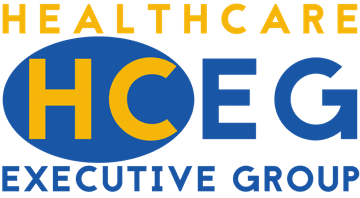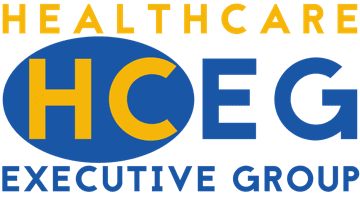CMS Leading the Way
As we continue to look for ways to drive improvements in quality of care while positively impacting the rising cost trend, collaboration between and the integration of payer and provider organizations has emerged as a leading strategy and a vision for the future. While we see evidence of a more integrated future across all healthcare sectors, today CMS drives changes through the Innovation Center founded under the purview ACA.
The most prominent example of innovative initiatives is the ACO Pioneer Program implemented by CMS. The overall intent is to create accountability for the care of a population (Population Health) and align incentives with the providers and payers responsible for these populations. Initial models focused on shared risk and upside for savings while protecting against downside risk and then moving towards full risk agreements in the future. CMS continues to demonstrate innovative thinking through the introduction of new reimbursement models, for example bundled payments for specific services. Again, aligning incentives between payer and provider and promoting care coordination will ensure that patients experiences the full benefits of the Triple Aim of healthcare: focusing on population health, improving the experience of care and impacting the per capita cost of care..
How these initiatives are implemented varies across regions, but all are focused on the same core elements: defining the needs of the population, designing interventions to address these needs, coordinating care across care modalities, aligning incentives across the ecosystem and measuring performance. As I stated, companies implementation approaches vary, for instance what role does the health plan care manager take Who provides or funds the required care coordinators
As CMS clearly understands, the key to driving improvements in quality is a new system for provider reimbursement. Specific programs are being develop and tested to move away from payment for service to payment for value. A recent key initiative driven by the CMS Innovation Center is their Bundled Payments for Care Improvements (BPCI). CMS has created four broad models of care which link payments for multiple services beneficiaries receive during an episode of care. These models test different reimbursement approaches graduating to a full risk based prospective payment for all services. In Model 4, participating organizations enter into agreements where they are accountable from a financial and performance perspective for an episode of care. The accountability keeps the focus on driving improvements in quality and a reduced cost for Medicare.
Another recent focus area being led by CMS is the Comprehensive Primary Care Initiative (CPC) launched in late 2012. The CPC is a five year plan focused on improving patient care by helping primary care practices improve their operations and work with patients to provide:
- Access to care providers and Continuity
- Planned Care for Chronic Conditions and Preventive Care
- Risk-Stratified Care Management
- Patients and Caregiver Engagement
- Coordination of Care Across the Medical Neighborhood
In an April 2016 announcement, CMS released the largest-ever initiative to improve how primary care is delivered and paid for in the United States. The Comprehensive Primary Care + (CPC+) will have two tracks:
- Track 1 practice get a monthly care management fee in addition to fee for service
- Track 2 provides the practices a monthly care management fee, reduced fees for E & M services but a monthly up-front comprehensive primary care payment for these services.
Lastly the newly announced Medicare Access and CHIP Reauthorization Act of 2016 (MACRA) directly impacts provider reimbursements and specifically incentives compensation for quality of care. The program focuses on changing the existing Sustainable Growth Rate (SGR) payment formula. MACRA should create a new framework for rewarding providers for giving better, rather than just more care and combining existing quality reporting programs into a single program. It also moves away from rewarding providers for use of technology under the current Meaningful Use Program and into rewarding providers who use technology to demonstrate improved care and outcomes.
While CMS is seen as leading the way, we have seen examples of commercial payers implementing their own value-based payment programs. Horizon Blues Cross and Blue Shield of New Jersey successfully implemented bundied payment programs that focus on payments for episodes of care as evidenced by their recent press release on February 16th, 2016. Aetna, Anthem and United Health Group all have plans underway to shift the majority of their payments to value based contracts over the next few years. While these programs have been in existence for years, what is different is the processes and technologies that support these programs that allow them to be successful.
Technology Implications
Technology is critical to the success of payer-provider collaboration and integration initiatives. CMS understood this and through the ACA has invested millions of dollars into helping providers acquire systems to support the creation of environments that allow data to be available and interoperable across organizational boundaries. Data is key to the success of all of these new collaboration and integration opportunities. Organizations that are self-contained, such as Kaiser, have an easier path to creating an environment where data is defined singularly and available across the organization. Because many of the organization that are collaborating to manage the health of a population are separate and distinct companies, their information architecture may be different making it difficult or impossible to exchange data. While the healthcare industry, spurred on by HHS, has been focusing on establishing and implementing standards for patient data exchange, we as and industry, have not made the progress required to find lasting success. We still have work to do as do vendors that provide solutions to this market.
Organizations cannot rely on single vendor solutions but must invest in tools and resources to support data exchange and aggregation between multiple platforms. The long-term vision is for the exchange of data to be at a discrete date element layer as opposed to sending a pdf report that cannot be used to support any analytic needs. The efforts cut across company boundaries and demand the interoperability of data across the entire healthcare ecosystem to support improvements in care at the time of service, enable the use of data to improve our ability to analyze the health of the population and support the implementation of interventions designed to address specific healthcare conditions. These efforts are not for the faint of heart, nor will they be addressed in a short-time frame. We will need to have patience to address both organization and technical barriers while recognizing the need to push forward as an industry to make progress. Lastly, in addition to data exchange and data aggregation for analytics, some of our existing core systems will need to be enhanced. For example, a claims system will need to be able to support payment for episodes of care as opposed to an individual claim.
Given all of this uncertainty, how do we as organizations move forward with these business ventures What are the critical success factors that need to be addressed to help mitigate risks and improve the likelihood of success
- Does your organization have a clear business strategy and plan that identifies objectives, and the roles and accountabilities that organizations will provide within these new business ventures
- Are incentives and the allocation of funds aligned to support the objectives you have defined
- Have you defined a care coordination strategy based upon an assessment of the health of the population that you will serve
- Are business requirements defined to support the model that you have developed:
- Does the business model identify the underlying data/information needs for each role/organization involved in this venture including the source and use of the data
- Do you have knowledge of the technical capabilities of the organizations in your business model to understand to assess their ability to address the identified requirements
- Have you developed a resource plan to support both the implementation and ongoing operations of your business venture
- Have you developed Key Performance Indicators (KPI) that will allow you to measure your progress
While the above question seems overwhelming, those sitting on the sidelines may be a risk as those organizations who are choosing to play the game may creating separation and competitive advantage.
https://changehealthcare.com/



